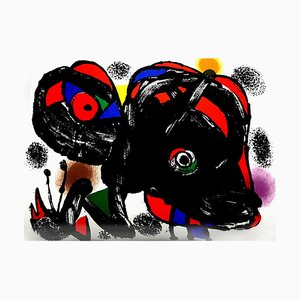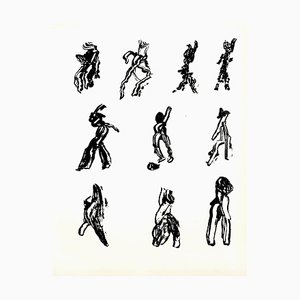Shipping quote request
We’ll calculate the shipping price as soon as getting your request.
Shipping quote request
We’ll calculate the shipping price as soon as getting your request.
You May Also Like
Sponsored Products
Natalia Roman, Copernicus Sunrise Study, 2022, Acrylic on Watercolor Paper

Joan Claret, Abstract Compositions, Watercolours, Set of 3

Lothar Quinte, Goa, 1991, Gouache on Japan Paper, Framed

Tano Festa, Composition, 1976, Ink Drawing

More from this Dealer
Living Painting - Colour Pochoir 1969

Orgy Lithograph by Leonor Fini, 1982

Zao Wou-ki - Original Lithograph - Abstract Composition 1962

Jean Cocteau - Europe Our Homeland - Original Lithograph 1961

Salvador Dali - Head of Veal - Original Etching 1969

Maurice Utrillo - Parisian Street - transfer lithograph 1927

As I Opened Fire Poster Triptych by Roy Lichtenstein for Stedelijk Museum, 1960s

Pablo Palazuelo - Original Lithograph 1976

Salvador Dali - Six Eggs - Original Etching 1967

André Derain - Ovid's Heroides - Original Etching 1938

Salvador Dali - Venus in Furs - Original Stamp-Signed Etching 1968

Flute Player - Lithograph 1959

Kees van Dongen - Montmartre 1900 - Original Lithograph

Joan Miro - Original Lithograph 1976

Sonia Delaunay - Composition - Original Lithograph 1972

Salvador Dali - Nude with Snail - Original Etching 1967

after Jean Dubuffet - Man - Pochoir 1960

Domergue - Naked - Original Signed Lithograph 1956

André Derain - Ovid's Heroides - Original Etching 1938

Henri Michaux - People - Original Lithograph 1952

More Products
Get in Touch
Make An Offer
We noticed you are new to Pamono!
Please accept the Terms & Conditions and Privacy Policy
Get in Touch
Make An Offer
Almost There!
To follow your conversation on the platform, please complete the registration. To proceed with your offer on the platform, please complete the registration.Successful
Thanks for your inquiry, someone from our team will be in touch shortly
If you are a Design Professional, please apply here to get the benefits of the Pamono Trade Program